Think about how many times you have used AI today. Did you use a GPS to get to work, Alexa to set your alarm clock, click on an advert for the jeans you were just talking about, or type a paragraph on ChatGPT to help phrase an email to your boss? This is all AI, and without realizing it, 88% of us use AI daily.
Artificial intelligence (AI) has experienced extraordinary growth in recent years and continues to advance at an unprecedented pace, with no sign of slowing down. A clear driver behind this surge is the rapid adoption rate of tools like ChatGPT, with over 100 million weekly users using it in everyday working life.
Artificial Intelligence:
A term coined in 1950, AI is the ability of a computer to perform tasks associated with human intelligence
Therefore although exciting yet somewhat terrifying, understanding the future AI trends for 2025 is crucial in today’s fast-paced and ever-changing world. It is important to note that technology is constantly evolving; Microsoft CEO Stayta Nadella describes AI as “becoming a commodity we can’t get enough of.” Hence, staying up to date with AI trends is vital, and the five AI trends to look out for in 2025 include Generative and Agentic AI, AI influence within science, the expansion of open-source AI, the shift towards robotics, and AI privacy concerns.
Trend 1: The Evolution of Generative and Agentic AI
The first trend to look out for in 2025 is Generative AI – a machine learning model that creates entirely new data instead of making and relying on predicted outcomes. This jump in AI opens windows of opportunity into what 2025 has in store. We are likely to see an increase in chatbots with improved functionality beyond the performance of intellectual tasks and evolving into Agentic AI – AI that uses its systems to perform more advanced functions involving reason. To put it simply, agentic AI creates the recipe, while generative AI prepares and cooks the food. AI agents can therefore perform tasks without the need for human support.
We hence predict a greater reliance and emphasis on AI agents in 2025, where AI agents will be able to complete customer service calls and operate inventories and appointments using real-time data. Companies looking to become early adopters to gain a competitive edge are eagerly watching the impact of this advancement within the AI space. This demand drives a greater need for capacity in data centers, which has a knock-on effect on chip manufacturing, energy supply, and infrastructure rollouts.
To give you an overall picture, a dominant supplier of AI software and hardware outlines the steps of Agentic AI as below.

Perceive

Action

Reason
Trend 2: AI Influence Within Science
AI is also predicted to play a pivotal role within science and is transforming how people explore and innovate, leading to medical and scientific research breakthroughs. Last year, in 2024, two Nobel Peace Prizes were awarded for artificial intelligence. Both emphasize that once AI is used responsibly, the benefits can be transformational for society and science.
Moreover, artificial intelligence helps speed up literature research and is used through deep-learning algorithms to enhance scientific research. For example, a research team from Google Deepmind has developed an AI tool called GenCast, a weather forecasting tool that can predict highly accurate forecasts; scientists even state that this new tool has “unmatched skill” and “speed.” A senior researcher at Deepmind further added, “We’ve made decades worth of improvements in one year.” This highlights what we can expect regarding the fast-changing and rapid advancements of AI for 2025. GenCast is also astonishing in that it can predict weather patterns 94.7% more accurately than ECMWF, which is the weather forecasting system used by most meteorologists.
Another example that emphasizes the fascinating evolution of AI in science is the development of AI-driven models that analyze crop destruction, aiding in future economic outlooks for the industry. Looking at what is achievable in such a short period is eye-opening, and the opportunity for AI within science in 2025 is definitely something to watch for this year.
Trend 3: The Expansion Of Open-source AI
Another significant trend for 2025 is the expansion of open-source AI models. The barriers to trade in the AI space will likely decrease as more companies enter the market in order to stay relevant. A recent example is the Chinese company DeepSeek, which competes with the Open AI ChatGPT and released its latest version, DeepSeek R1, on January 20th.
DeepSeek R1 grabbed the attention of the rest of the world due to its similarities to ChatGPT and, more impressively, the inexpensive production costs in that it needs fewer GPU chips to function. As a result, leading chipmakers supplying GPUs for large-scale AI models saw a drastic decline in stock prices due to the impact of a potential lower-cost alternative being used within the market. This shift represents AI’s rapid and unpredictable environment, which can occur in a matter of days. This emphasizes the importance of staying ahead to remain competitive in this ever-changing environment.
Trend 4: The Shift Toward Robotics
The fourth trend to watch out for throughout 2025 is the shift towards Robotics. As we move into this year, we are likely to see an increase in automation and robotics through the advancements of AI. We have already seen Robot Vacuums, which use AI integration to vacuum your floors, making household chores just that much easier. Yet, more is coming. Elon Musk recently announced his vision to launch a “RoboTaxi” in June 2025, which involves cars without steering wheels and requires little to no human interaction. To add to this autonomous future, Musk has further discussed the talk of the production of a humanoid robot known as “The Optimus,” a humanlike robot using an AI-trained brain. According to Musk, this will be the “biggest product in history,” intending to produce half a million of these Optimus robots by 2027.
Yet despite people’s fear of robots, 92% of companies are planning to increase their investments in AI in general within the next three years. So, whether exciting or daunting, in 2025, we will start to see AI within Robotics pushing boundaries.
Trend 5: AI and Privacy Concerns
Finally, naturally, as we move into 2025, we will see the balance and growing importance between AI innovation and privacy concerns. Although convenient and efficient, many are raising concerns regarding the personal data that AI collects, such as facial recognition, location tracking, and searching habits.
According to Statista, 62% of people are worried about data privacy within artificial intelligence, which is of great concern. In 2023, ChatGPT experienced a data breach, exposing users’ data and creating massive controversy. Therefore, AI is becoming more advanced and capable of managing personal information, and we will also see a greater emphasis on people’s privacy in 2025.
Many policymakers realize this growing concern and have incorporated AI laws to protect data privacy. For example, the European Union has incorporated the European Union’s General Data Protection Regulation (GDPR). This is essentially a set of principles to be followed by regulators when dealing with personal data. China has also implemented the Personal Information Protection Law (PIPL), an act created to protect personal information.
However, these laws add a sense of complexity for companies involved in shipping and transferring AI software worldwide. It is, therefore, essential to understand all the regulations that go with this. Hence, companies with an accurate Importer of Record, like TecEx, who are skilled in the regulation and legal framework, are needed.
What does this all mean in terms of TecEx and Trade?
So what do these rapid future advancements mean regarding TecEx and Trade?
To stay relevant, we need to incorporate AI into our business; hence, understanding the regulations and legal ramifications around all these policies is essential in order to ship AI tools to different countries. The Biden Administration set regulations early in 2025 to keep artificial intelligence out of China. The aim is to ensure that the United States and its partners control AI. This regulation can be put into three tiers, each tier having different rules on the amount of AI chips that can be sent to various countries.
.webp)
As seen, exporting AI chips in and out of the United States, is complex. Partnering with an Importer of Record can ease the process, and TecEx knows all the ins and outs of successfully passing AI goods through customs. With the global demand and exciting trends of AI for 2025, having a reliable partner to streamline logistics and ensure all AI goods reach their destination without delay is essential. AI is changing fast, and falling behind is not a risk any business can afford to take.
Summary
AI will continue to develop rapidly and become part of everyday business. The top trends to look out for and to wrap our heads around include:
- Generative and Agentic AI
- AI and Science
- Open Source AI
- The Shift Towards Robotics
- AI and Privacy Concerns
Keeping up with AI trends is essential to staying ahead. TecEx is the ultimate solution for ensuring all regulations are met when deciding how to ship AI-related commodities worldwide. Be sure to bookmark this page and check back regularly, as TecEx will be closely tracking the latest AI trends for 2025 and will provide continued updates on new advancements.
.webp)


